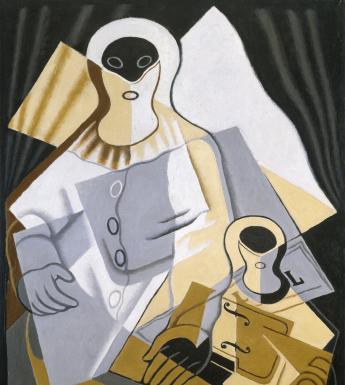The Art of Exhibition Pieces: A Window into Creativity
Exhibition pieces are more than just artworks on display; they are windows into the creative minds of artists, offering a glimpse into their inspirations, techniques, and visions. Each piece showcased in an exhibition tells a unique story, inviting viewers to immerse themselves in a world of beauty, emotion, and meaning.
The Power of Curation
Curating exhibition pieces is an art form in itself. It involves selecting and arranging artworks in a way that enhances their individual impact while creating a cohesive narrative that resonates with the audience. The careful curation of pieces can evoke powerful emotions, spark thought-provoking conversations, and leave a lasting impression on viewers.
Diverse Perspectives
Exhibition pieces come in various forms, from paintings and sculptures to installations and multimedia artworks. Each piece offers a unique perspective on the world, reflecting the artist’s experiences, beliefs, and cultural influences. Through diverse mediums and styles, artists express their creativity and challenge viewers to see the world in new ways.
A Journey of Discovery
Exploring exhibition pieces is like embarking on a journey of discovery. As viewers move from one artwork to another, they encounter different themes, moods, and techniques that broaden their understanding of art and creativity. Each piece leaves its mark, sparking curiosity and igniting imagination.
The Impact of Exhibition Pieces
Exhibition pieces have the power to inspire, provoke thought, and foster connections between artists and viewers. They serve as catalysts for dialogue and reflection, prompting discussions about society, culture, identity, and more. Through their visual language, exhibition pieces engage with audiences on a profound level.
Next time you visit an art exhibition, take a moment to appreciate the intricacies of each piece on display. Let yourself be captivated by the beauty and complexity of exhibition pieces as they transport you into the world of artistic expression.
7 Essential Tips for Showcasing Exhibition Pieces Effectively
- Ensure proper lighting to highlight the exhibition pieces.
- Use clear and concise labels to provide information about each piece.
- Create a cohesive theme or storyline for the exhibition.
- Allow enough space around each piece for viewers to appreciate them.
- Regularly check and maintain the condition of the exhibition pieces.
- Consider interactive elements to engage visitors with the pieces.
- Prominently display important or standout pieces in key locations.
Ensure proper lighting to highlight the exhibition pieces.
Proper lighting plays a crucial role in showcasing exhibition pieces effectively. By carefully considering the lighting setup, curators can enhance the visual impact of artworks, bring out their textures and colors, and create a captivating ambiance that draws viewers’ attention. Adequate lighting not only illuminates the exhibition space but also adds depth and dimension to each piece, allowing them to shine and be appreciated in all their glory. Whether it’s natural light filtering through windows or strategically placed spotlights, ensuring proper lighting is essential to highlight the beauty and intricacies of exhibition pieces for visitors to fully immerse themselves in the artistic experience.
Use clear and concise labels to provide information about each piece.
Using clear and concise labels to provide information about each exhibition piece is essential for enhancing the viewer’s understanding and appreciation of the artwork. These labels serve as a guide, offering insights into the artist’s inspiration, techniques, and intended message. By presenting relevant details in a straightforward manner, such as the title of the piece, medium used, and a brief description, viewers can engage more deeply with the artwork and develop a richer connection to its narrative. Clear labels not only inform but also enrich the overall viewing experience, allowing audiences to delve into the story behind each piece with clarity and insight.
Create a cohesive theme or storyline for the exhibition.
To enhance the impact of exhibition pieces, it is essential to create a cohesive theme or storyline that ties the artworks together. By establishing a common thread that connects the pieces, whether through shared motifs, narratives, or emotions, the exhibition becomes more than just a collection of individual works—it becomes a unified and immersive experience for the audience. A cohesive theme or storyline guides viewers through the exhibition, providing context and depth to the artworks while allowing them to engage with a curated narrative that enriches their understanding and appreciation of the art on display.
Allow enough space around each piece for viewers to appreciate them.
When curating an exhibition, it is essential to allow enough space around each piece for viewers to fully appreciate and engage with the artwork. Adequate spacing creates a sense of openness and allows viewers to focus on the details, textures, and emotions conveyed in each piece. By giving artworks room to breathe, viewers can immerse themselves in the artist’s vision, fostering a deeper connection and understanding of the creative process. Strategic placement and spacing of exhibition pieces enhance the overall viewing experience, encouraging contemplation and appreciation of art in its purest form.
Regularly check and maintain the condition of the exhibition pieces.
Regularly checking and maintaining the condition of exhibition pieces is essential to preserve their integrity and longevity. By conducting routine inspections, artists and curators can identify any signs of damage, wear, or deterioration early on, allowing them to take prompt action to prevent further harm. Proper maintenance, such as cleaning, repairing, and storing artworks correctly, ensures that exhibition pieces remain in optimal condition for viewers to appreciate their beauty and significance. This attention to detail not only safeguards the artistic value of the pieces but also demonstrates a commitment to upholding the quality and professionalism of the exhibition.
Consider interactive elements to engage visitors with the pieces.
When curating exhibition pieces, it is essential to consider incorporating interactive elements to enhance visitor engagement with the artworks. By introducing interactive features such as touchscreens, audio guides, or immersive installations, viewers can actively participate in the artistic experience. These elements not only deepen the connection between the audience and the pieces but also provide a dynamic and memorable way for visitors to interact with and appreciate the art on display. Interactive elements bring a new dimension to exhibitions, making them more engaging, educational, and accessible to a wider audience.
Prominently display important or standout pieces in key locations.
To enhance the impact of an art exhibition, it is essential to prominently display important or standout pieces in key locations. Placing these significant artworks in strategic positions within the exhibition space draws attention and creates focal points for viewers. By showcasing these pieces prominently, curators can guide the audience’s experience, highlight the artists’ intentions, and provide a deeper understanding of the exhibition’s themes and messages. This deliberate placement not only elevates the visual appeal of the display but also ensures that key pieces receive the recognition and appreciation they deserve, enriching the overall viewing experience for visitors.




